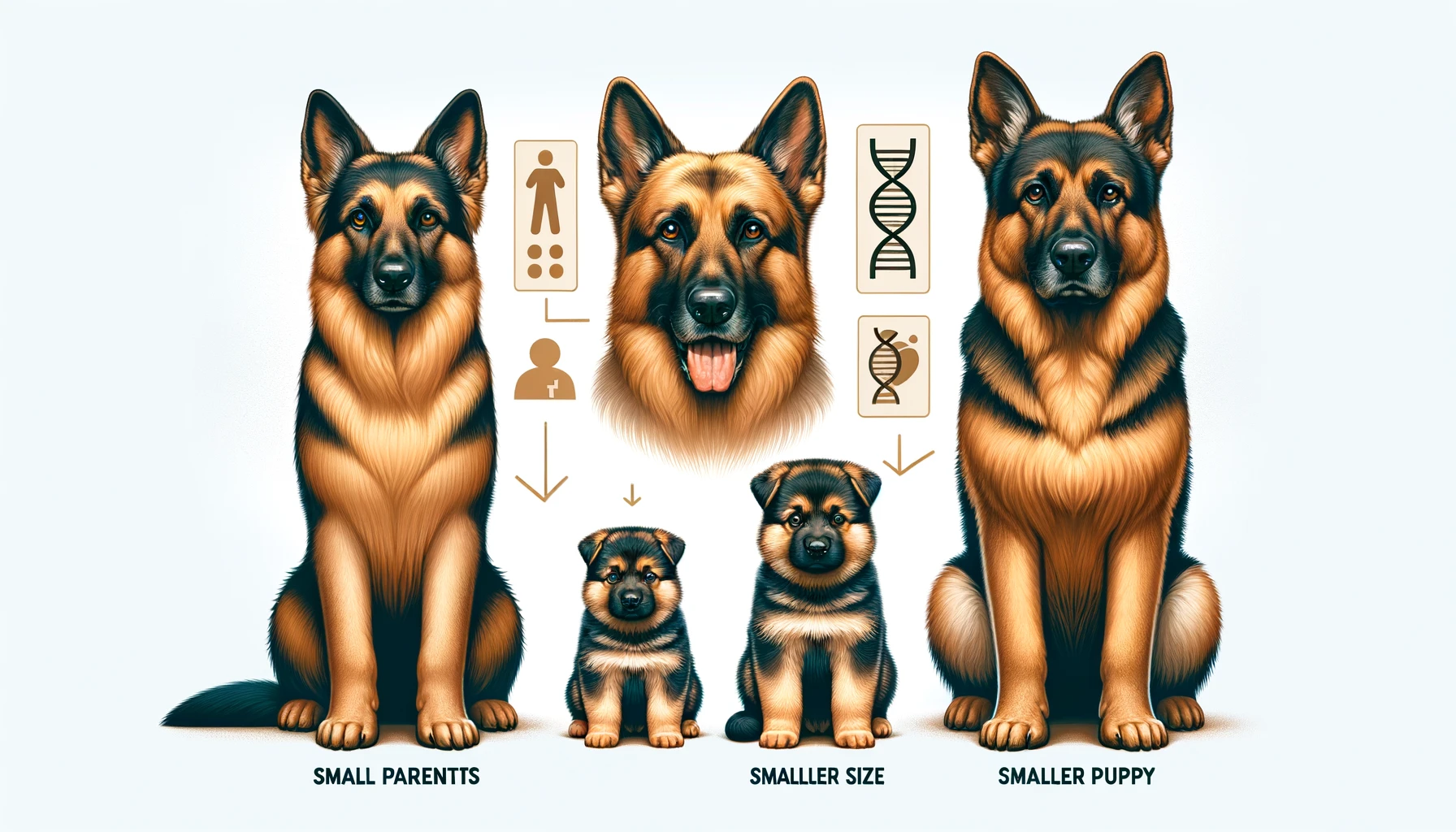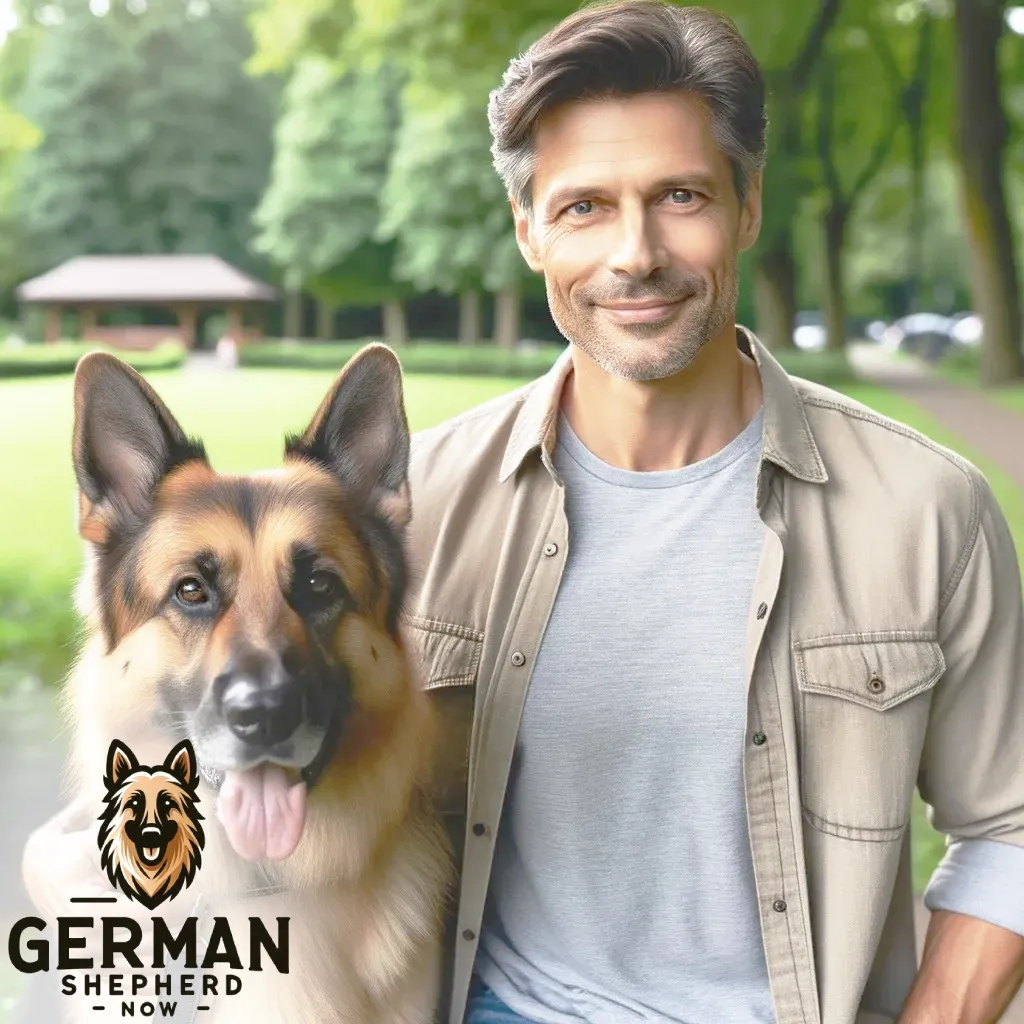Why Is My German Shepherd So Small

There are a few reasons why your German Shepherd may be smaller than average. Genetics play a significant role, as they may have inherited traits from smaller ancestors.
Factors such as diet, health, and the level of physical activity can also influence their growth and size. It’s also possible that they may not have reached their full height yet, depending on their age.
Understanding the Size of Your German Shepherd
If your German Shepherd seems smaller than expected, there are several reasons to consider.
Let’s explore some well-explained facts that could account for their size.
Genetic Factors
The most common reason for a German Shepherd to be small is genetics. If the puppy’s parents are smaller than average, the puppy will likely be small. This size trait can be inherited, like eye color or coat pattern.
Nutrition and Health
Proper nutrition is crucial for a German Shepherd’s growth. If your dog isn’t getting enough nutrients, especially during their essential growth periods, they may not reach their full size. Health issues like parasitic infections or hormonal imbalances can also stunt growth.
Breed Variation
Not all German Shepherds are bred to the same standard. Some are born for work and may be larger and more robust, while others are bred for show or as pets and may be smaller. There’s also a natural size variation within the breed.
Physical Activity
Adequate exercise is essential for muscle development and growth. German Shepherds that are not as active may not develop the muscle mass that contributes to the larger size associated with the breed.
Age of the Dog
Puppies grow at different rates; some may take longer to reach their full size. Your German Shepherd may still grow, especially if they are under two years old when most get their adult size.
Understanding these factors can provide insight into why your German Shepherd may be on the smaller side. It’s always good to consult a veterinarian to rule out any health issues and ensure your furry friend is on the right track for a healthy life.
German Shepherd Growth Chart
When raising a German Shepherd, knowing how they should grow at each stage of their life is helpful.
This growth chart provides general guidelines to help you track your German Shepherd’s development.
Remember that genetics, nutrition, and health care all play a role in growth, so that these numbers may differ for each dog.
| Age (Months) | Weight Range (Males) | Weight Range (Females) | Expected Height Range |
| 1 | 8-10 lbs (3.6-4.5 kg) | 5-8 lbs (2.3-3.6 kg) | Not measured |
| 2 | 16-20 lbs (7.3-9.1 kg) | 11-17 lbs (5-7.7 kg) | Not measured |
| 3 | 22-30 lbs (10-13.6 kg) | 17-26 lbs (7.7-11.8 kg) | Not measured |
| 4 | 35-40 lbs (15.9-18.1 kg) | 22-32 lbs (10-14.5 kg) | Not measured |
| 6 | 50-60 lbs (22.7-27.2 kg) | 40-50 lbs (18.1-22.7 kg) | 16-18 in (40-45 cm) |
| 9 | 60-75 lbs (27.2-34 kg) | 50-60 lbs (22.7-27.2 kg) | 18-21 in (45-53 cm) |
| 12 | 65-90 lbs (29.5-40.8 kg) | 55-70 lbs (24.9-31.7 kg) | 21-24 in (53-60 cm) |
| 24 | 75-95 lbs (34-43 kg) | 60-75 lbs (27.2-34 kg) | 22-26 in (55-65 cm) |
Growth Stages of German Shepherds: When Do They Get Big?
German Shepherds are a large breed known for their strength and size. But how do they grow, and when do they reach their full height?
Here are some well-explained facts about the growth stages of German Shepherds:
- Puppyhood (0-6 months): German Shepherd puppies grow during their first six months. By the end of this stage, they reach about half of their adult weight.
- Adolescence (6-12 months): Growth continues but slows as they move into adolescence. They start to fill out and gain muscle during this period.
- Young Adulthood (1-2 years): While they may reach their full height by one year, German Shepherds continue to develop in bulk and muscle until they are about two years old.
- Full Maturity (2-3 years): German Shepherds are considered grown and reach their adult size by the time they are 2 to 3 years old. Some may “bulk up” until they are older.
It’s important to note that proper nutrition and exercise are crucial throughout each growth stage to ensure your German Shepherd grows to its full potential.
Regular check-ups with a veterinarian can also help track their growth and ensure they are on the right path.
At What Age Do German Shepherds Reach Full Size?
German Shepherds are known for their size and strength but don’t reach their full size overnight.
Understanding the growth timeline of German Shepherds can help owners anticipate how big their puppies might get and when they will stop growing.
Here’s what you need to know about the growth stages of this intelligent and active breed:
- Puppyhood and Adolescence: German Shepherd puppies grow for the first six months. After six months, their growth rate slows down, but they continue to develop in size and stature until they are about 18 months old.
- Reaching Physical Maturity: While most German Shepherds will be close to their adult height by 9-12 months, they will continue to fill out and gain muscle until they are about 18-24 months old. They must get proper nutrition and exercise to support healthy development during this time.
- Factors Affecting Growth: Genetics is the primary determinant of a German Shepherd’s size. Other factors include nutrition, health, and the level of physical activity. It’s important to note that spaying or neutering your German Shepherd can also affect their growth, often leading to a taller dog since the closing of the growth plates can be delayed.
- Monitoring Your Dog’s Growth: Regular check-ups with a vet are essential to ensure your German Shepherd is growing at a healthy rate. Your vet can help you track your dog’s growth curve and offer advice if your dog is under or overweight.
German Shepherds stop growing in height by 18 months and reach full maturity by 24 months.
Each dog is unique; various factors can influence their growth rate and adult size.
Balanced nutrition, regular exercise, and veterinary care ensure your German Shepherd grows healthy and strong.
Accelerating Your German Shepherd’s Growth
When raising a German Shepherd, owners often seek ways to ensure their puppy grows.
While a dog’s growth is determined by genetics, there are ways to ensure that your German Shepherd reaches its full potential in size.
Here are some well-explained facts on how you might be able to speed up your German Shepherd’s growth:
- Balanced Nutrition: Providing your German Shepherd with a balanced diet rich in proteins, vitamins, and minerals is crucial. High-quality puppy food formulated for large breeds can support proper growth and development.
- Regular Exercise: Adequate exercise is vital for muscle development and overall growth. It should be age-appropriate to avoid stress on developing joints.
- Proper Health Care: Regular veterinary check-ups are essential to prevent and treat health issues that may hinder growth, such as parasites or hormonal imbalances.
- Adequate Rest: Puppies, including German Shepherds, need plenty of sleep to grow. Ensure your puppy has a quiet, comfortable place to rest undisturbed.
- Avoid Overfeeding: While it might seem counterintuitive, overfeeding can lead to obesity, which can stress a growing puppy’s skeleton and joints, leading to health problems.
- Limit Strenuous Activity: Too much strenuous activity at a young age can damage a puppy’s developing bones and joints, so finding a good balance is essential.
Unique Growth of Your German Shepherd
A German Shepherd’s smaller size often stems from genetics, but diet, health, and exercise also play pivotal roles in their growth.
Puppies need proper nutrition and care to reach their potential; some may be late bloomers.
Remember, each dog is distinct, and variations within the breed are common. For concerns about growth, consult your vet for tailored advice.

I’m Martin, and I grew up in the super cool city of Seattle. You know, the place with all the incredible mountains and forests? Yeah, that’s my playground!
Ever since I was little, I’ve been all about nature. I used to wander around the woods with a notebook, doodling all the cool plants and animals I’d find.
